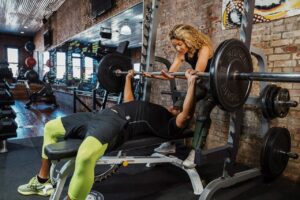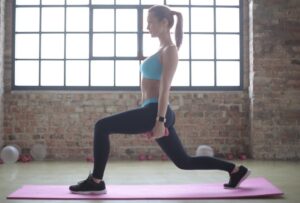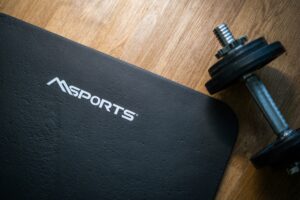Getting a big and round butt is a common goal of many women but is it possible to change the shape of your posterior? For instance, can you go from having a square butt to a round one?
Fortunately, yes. Changing your butt shape is possible, regardless of where you stand. But it all starts with understanding the four common types.
Today’s guide will explore the primary butt types, what causes some of them, and how you can work for a rounder behind with ten effective movements.
Let’s explore.
The 4 Primary Butt Shapes
While no two butts look the same, four primary types classify almost every bum on the planet. These are:
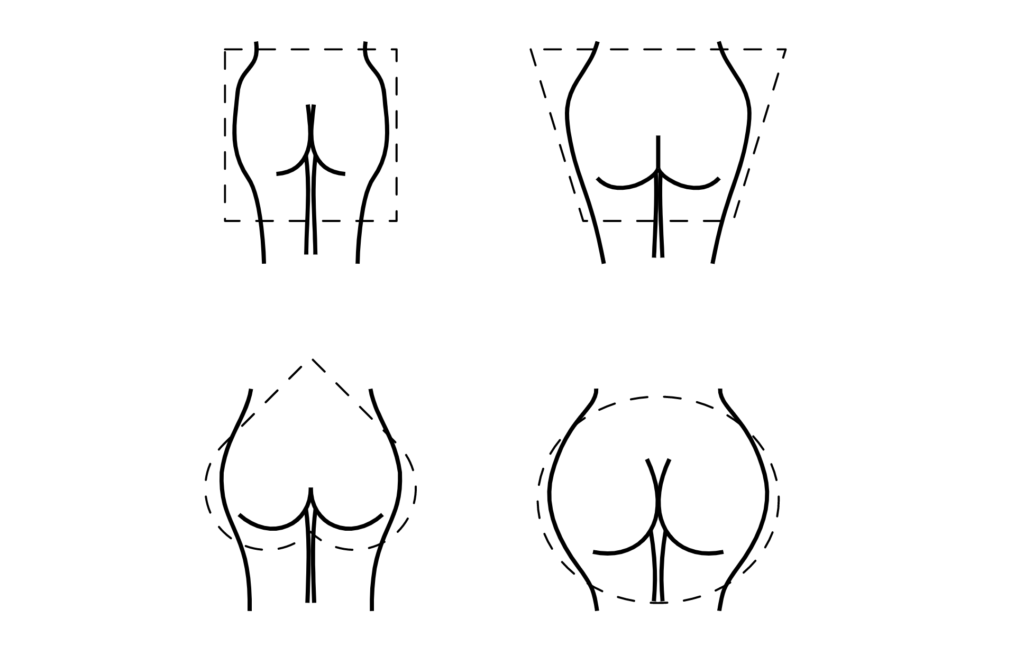
1. Round Butt
A round buttock, also known as a bubble butt, is perhaps the most popular and desirable of the four shapes. Even fat distribution and balanced muscle development in the upper, middle, and lower glutes contribute to the round behind.
When seen from behind, the round butt looks like the letter O and makes the lower back and thighs appear smaller in comparison.
A round butt contributes to the 1.618 golden ratio we discussed in our Greek god physique guide. The golden ratio for men comes from broad shoulders and a narrow waist, but the opposite appears true for women.
For women, a wider waist measurement compared to the rest of the body contributes to the popular hourglass figure that men and women consider more attractive.
2. Square Butt
In contrast to the desirable round behind, a square butt is much more common but less desirable.
The square butt is relatively common and generally results from three things:
- The shape of the hip bone is more square, featuring straight lines
- Low muscular development in the gluteal region
- A layer of fat covering the sides of the hips (love handle area), further contributing to the square butt appearance
A square bum resembles the letter H when seen from the back and generally appears flat from the side.
While impossible to change the shape of your hip bone, building muscle in the area and losing fat can change how your butt looks, leading to a round or heart-shaped behind.
3. Inverted Butt
The Inverted butt shape is also relatively common and not as desirable as a round or heart-shaped behind.
It results from having more mass in the upper glute area but not enough in the middle and lower butt region. As such, the inverted butt is wider and rounder at the top but narrow and flat in the lower area.
When seen from the back, the inverted butt resembles the letter V.
Like the square butt, fat distribution, hip bone shape, and muscle development determine the shape.
4. Heart-Shaped Butt
Like the round butt, a heart-shaped behind is desirable but less common. It results from a narrow waistline, decent gluteal development, and even fat distribution on the buttocks.
When seen from the back, it resembles the shape of a heart, hence its name. Similar to the round butt, it looks curvy from the side.
Women who train their glutes, control their calorie intake, and eat a high-protein diet will generally end up with a round or heart-shaped butt. Unfortunately, it’s nearly impossible to pick between the two because they are identical and genetic factors cast the final vote.
Your muscles’ exact shape and insertions, body fat distribution, and hip bone shape will largely determine which one you can get. Still, both butt types look identical and contribute to the Golden ratio.
Hevy Workout Tracker
Create your own workouts with Hevy, and track your progress. Join +2M athletes.

For Personal Trainers
Personal trainer software to build workout programs for your clients, and track their progress.
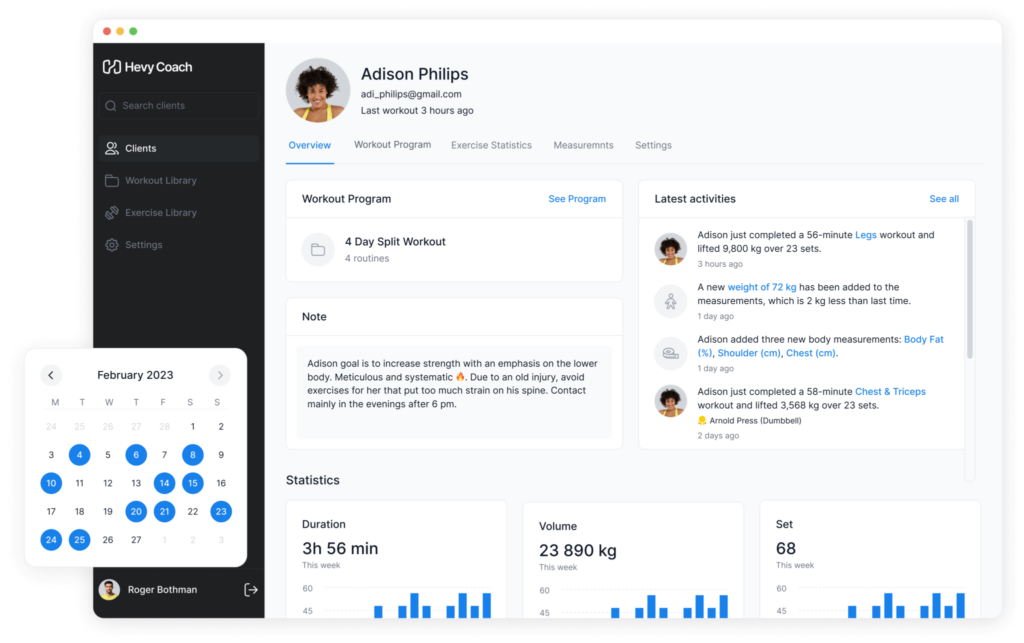



Anatomy of The Glutes
The glutes are a collection of three muscles that make up the buttocks region: the gluteus maximus, minimus, and medius.
Among these, the glute maximus is the largest and most powerful (1). It works with the hamstrings to promote pelvic stability and produce hip extension (2). The muscle also plays a crucial role in walking, running, sprinting, jumping, squatting, and more.
Developing the gluteus maximus will add the most mass to your buttocks and fill up the lower and middle regions.
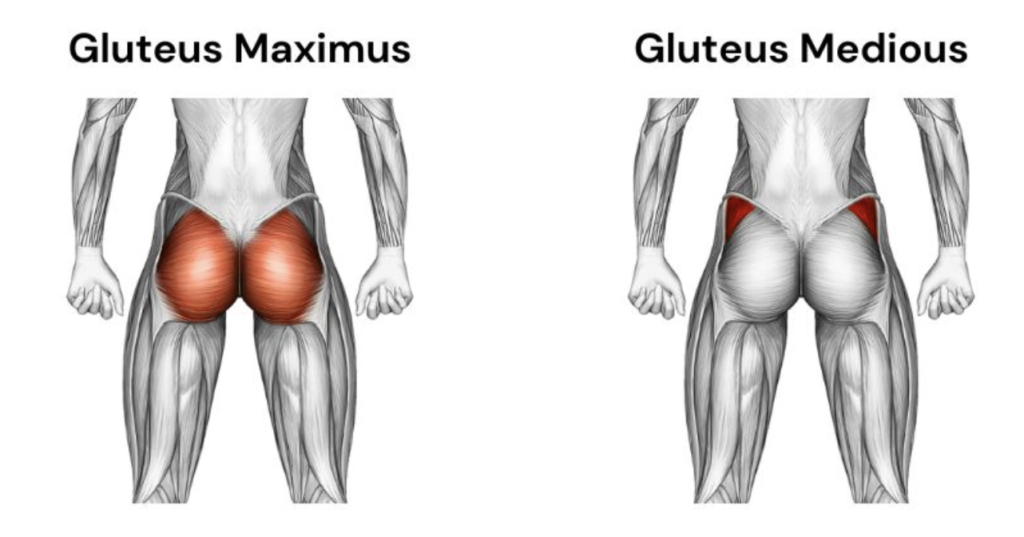

The gluteus medius is a smaller muscle situated over the glute maximus. It lies on the outer portion of the buttocks and contributes to the shelf butt. The glute medius is the primary hip abductor and is primarily responsible for leg abduction (e.g., lifting your leg to the side) (3). It also contributes to hip stability and pelvic alignment.
Finally, we have the glute minimus––the smallest of the three. It lies on the upper outer portion of the buttocks region (beneath the gluteus medius) and is crucial for hip stability and abduction (4).
Developing all three muscles is crucial for optimizing how your buttock looks. The following points will review some helpful tips and 10 of the best glute exercises to fix square buttocks.
How to Turn a Square Bum Into a Round One (4 Tips)
1. Do a Variety of Glute Exercises
Our first tip for turning a square-shaped bum into a round one is to perform various glute exercises. Doing so would allow you to target all three gluteal muscles, resulting in more balanced development.
You should do at least one exercise emphasizing a muscle in the area. For example:
- Gluteus maximus – hip thrust
- Gluteus medius – clamshells
- Gluteus minimus – fire hydrants
Related article: 5 Isolation and 9 Glute Compound Exercises for a Head-Turning Behind
2. Train Your Glutes 2+ Times Weekly
Research suggests that training our muscles two or more times per week is more beneficial for growth and strength gain (5, 6). Doing so would allow you to perform more sets, experiment with more exercises, and cause a stronger disruption.
The only requirement is to leave at least 48 hours of recovery between sessions. For example, train your glutes on Monday and Thursday.
3. Leverage Progressive Overload
Progressive overload is a principle that roughly states:
“For muscle growth, strength gain, or any other athletic improvement to occur, we must experience increasingly greater stress in our training.”
In other words, your workout needs to get increasingly challenging over time to keep promoting improvements.
So, in addition to training your glutes frequently and doing various exercises, aim for steady progress:
- Lift more weight
- Do more reps/sets
- Train through a longer range of motion
- Master more challenging exercises
4. Lose Excess Body Fat
Losing excess body fat is also crucial for fixing square-shaped buttocks. Body fat covering the buttocks can impact the area’s appearance, even if you have well-developed glute muscles.
Here’s what to focus on to burn fat effectively:
- Practice resistance training three to four days per week
- Lose no more than 0.5 to 1 percent of your body weight each week (7)
- Eat enough protein to support lean tissue (up to 1 gram per lb of body weight) (8)
- Get at least seven hours of sleep (9)
10 of The Best Glute Exercises to Get Rid of Square Buttocks
1. Deep Squat
Regular squats target the quadriceps, which make up the front portion of the thighs and produce knee extension. Deep squats work the same muscles but also involve the glutes more effectively, leading to superior buttocks development (10).
A fantastic advantage of squats is that you can pick between several effective variations, including barbell, front, goblet, and bodyweight squats. It’s best to start with bodyweight squats to determine how low you can squat with proper form before introducing external weight.
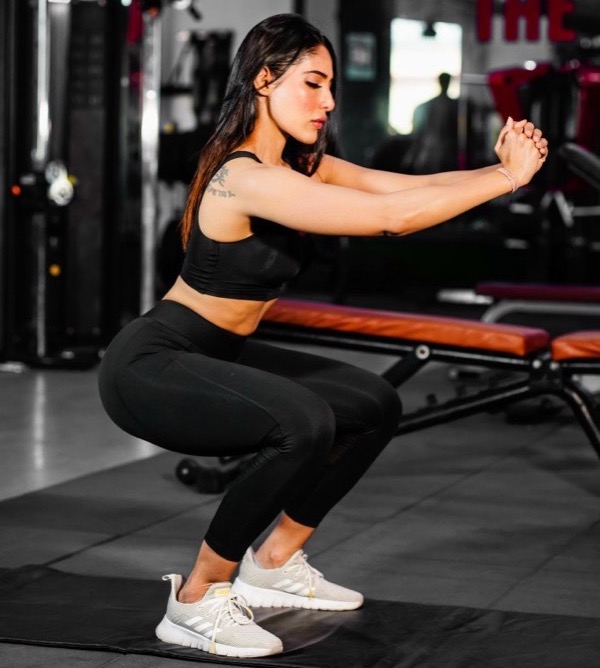

How to (bodyweight deep squat):
- Stand tall with your feet shoulder-width apart and toes pointing slightly out.
- Retract your shoulder blades and raise your arms in front of your body for balance.
- Take a deep breath and tense your midsection.
- Descend into a squat, moving as low as possible while keeping your heels on the ground. Your thighs should be slightly below parallel (hips below knee level).
- Pause at the bottom for a moment and press through your heels to move up. Exhale near the top.
Related article: Develop a Shelf Butt: 2 Upper Glute Workouts and 10 Upper Glute Exercises
2. Hip Thrusts
Hip thrusts were popularized by Bret Contreras, Ph.D., and are one of the best exercises for developing all gluteal muscles and fixing the square shape of your behind (11).
Despite the simplicity, hip thrusts are excellent because they are relatively easy to learn, their range of motion is fantastic, and you can overload your buttocks with a lot of weight.
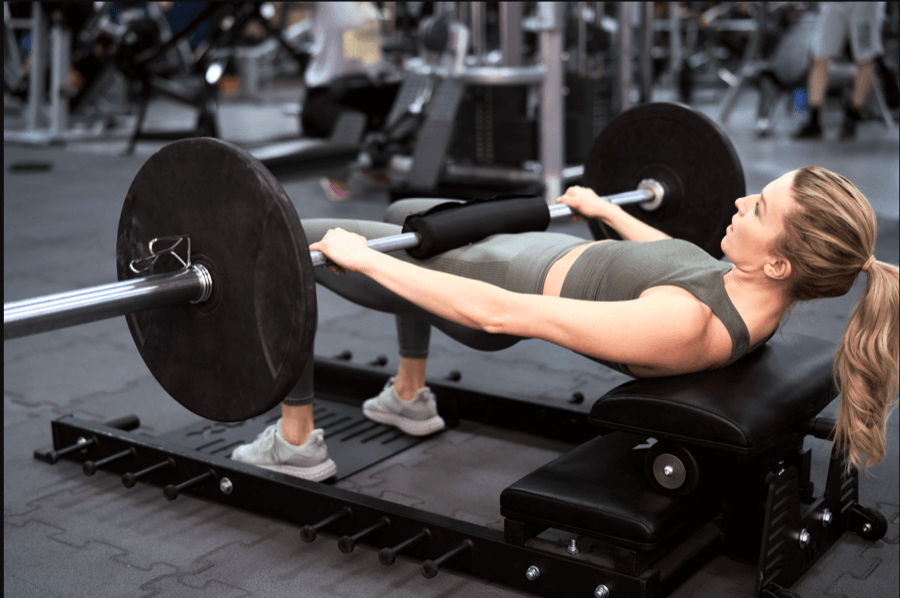

How to:
- Sit down on the floor with a loaded barbell over the crease of your hips. Have a flat gym bench behind your back.
- Position your upper back against the edge of the gym bench, bend your knees, and plant your feet flat on the ground. Your feet should be at a comfortable distance from your buttocks.
- Retract your shoulder blades, engage your abs, take a breath, and put your hips in contact with the barbell. Hold the barbell with both hands for support.
- Press through your heels and squeeze your glutes to drive your hips toward the ceiling.
- Drive up until your hips are in line with your knees and shoulders. Your knees should be directly over your ankles at the top position.
- Slowly lower your buttocks to the floor and exhale.
- Inhale again and repeat.
3. Glute Bridge
The glute bridge is similar to hip thrusts, apart from one difference. Instead of placing your upper back on an elevated object, such as a gym bench, you lie flat on the floor.
Glute bridges are an excellent alternative for beginners because you can do reps without additional resistance. More advanced trainees can even perform the single-leg glute bridge to emphasize one side at a time.
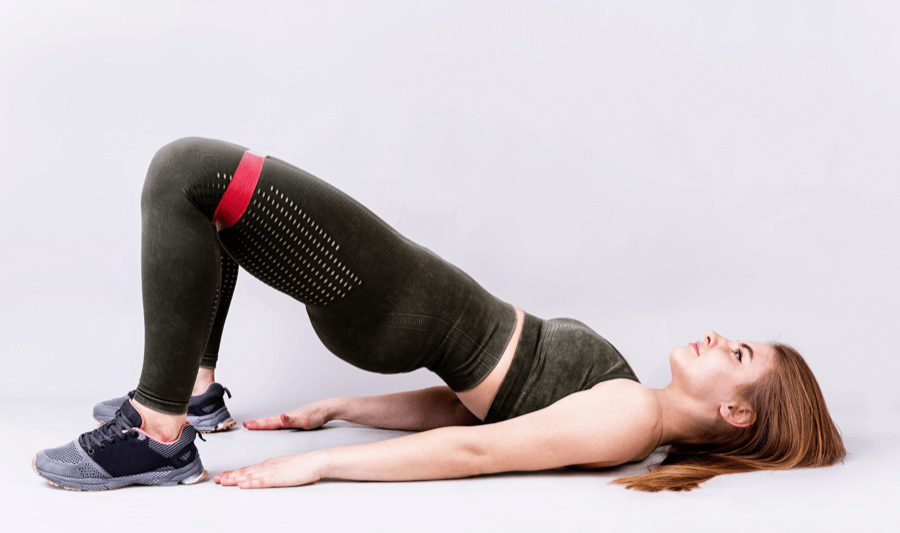

How to:
- Place an exercise mat on the floor and lie down with your arms straight and to your sides.
- Bend your knees and plant your feet flat on the floor and hip-width apart.
- Retract your shoulder blades, take a deep breath, and engage your abs.
- Press through your heels and squeeze your buttocks to drive your hips toward the ceiling.
- Your shoulders, hips, and knees should be in a straight line at the top position.
- Pause for a moment and lower your buttocks to the floor as you exhale.
4. Clamshells
Clamshells are another beginner-friendly exercise for round glutes. Unlike the previous movements that primarily emphasized the gluteus maximus, clamshells focus on the gluteus medius.
You can also wrap a mini resistance band over your thighs to make the exercise more challenging.
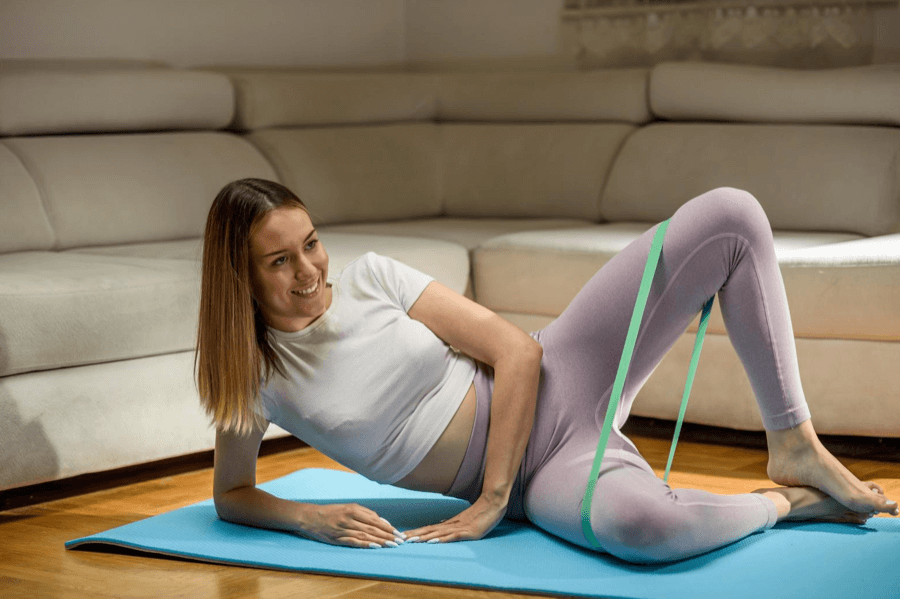

How to:
- Lie on one side with your knees bent, legs stacked, and feet together.
- Tense your midsection and inhale.
- Raise your top knee toward the ceiling in one fluid motion and pause at the top. Keep your feet glued together.
- Lower your knee to the starting position and exhale.
- Inhale again and repeat.
- Once finished, lie on your opposite side, and do the same number of reps with your other leg.
Related article: 10 of the Best Exercises for a Heart-Shaped Butt
Hevy Workout Tracker
Create your own workouts with Hevy, and track your progress. Join +2M athletes.




For Personal Trainers
Personal trainer software to build workout programs for your clients, and track their progress.




5. Lateral Walks (Banded)
Banded lateral walks are an excellent exercise that emphasizes the gluteus medius and minimus while also working the glute max.
Doing the exercise improves glute activation, making it easier to build a round-shaped butt. You can do these during your warm-up before training or as the last exercise of a glute-focused session.
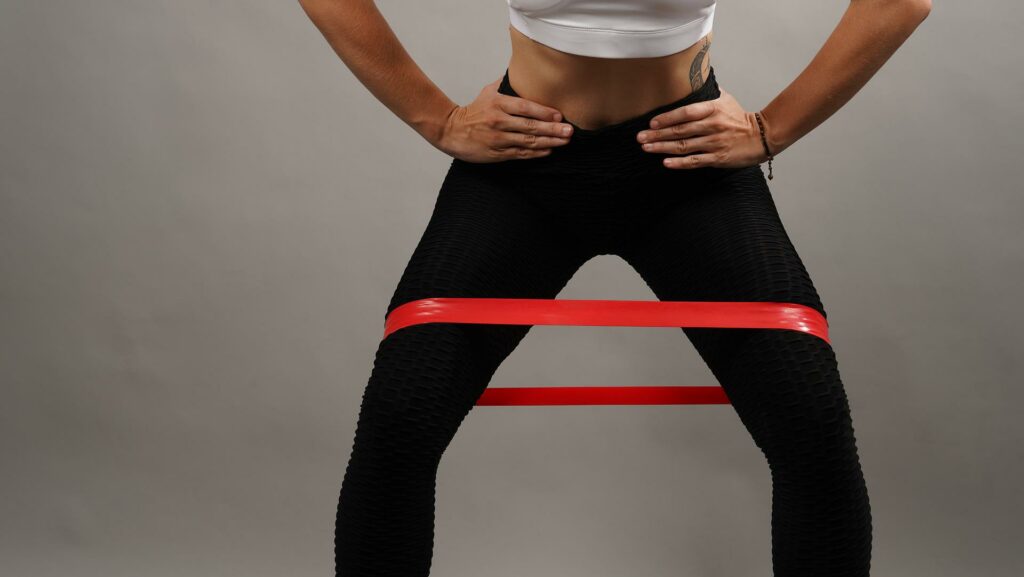

How to:
- Wrap a mini resistance band over your ankles or just above your knees.
- Stand tall with your feet a few inches apart.
- Bend your knees slightly and lean your torso forward just a bit. Extend your arms in front of your body for balance if you wish.
- Inhale and step to the right, moving your feet one at a time.
- Take another step to the right and continue moving in that direction for up to 30 seconds, breathing steadily as you do.
- Move to the left for the same number of steps. Keep your steps controlled and engage your glute muscles from start to finish.
Related article: Top 15 Gluteus Minimus Activation Exercises
6. Fire Hydrants
Fire hydrants are another simple and beginner-friendly exercise to develop the gluteus medius and minimus through hip abduction.
To perform the exercise, you must get down on all fours and raise one leg laterally while keeping the knee bent. Doing so resembles a dog lifting its leg to pee, hence the name.
You can make fire hydrants more challenging by looping a mini resistance band over your thighs for additional tension.
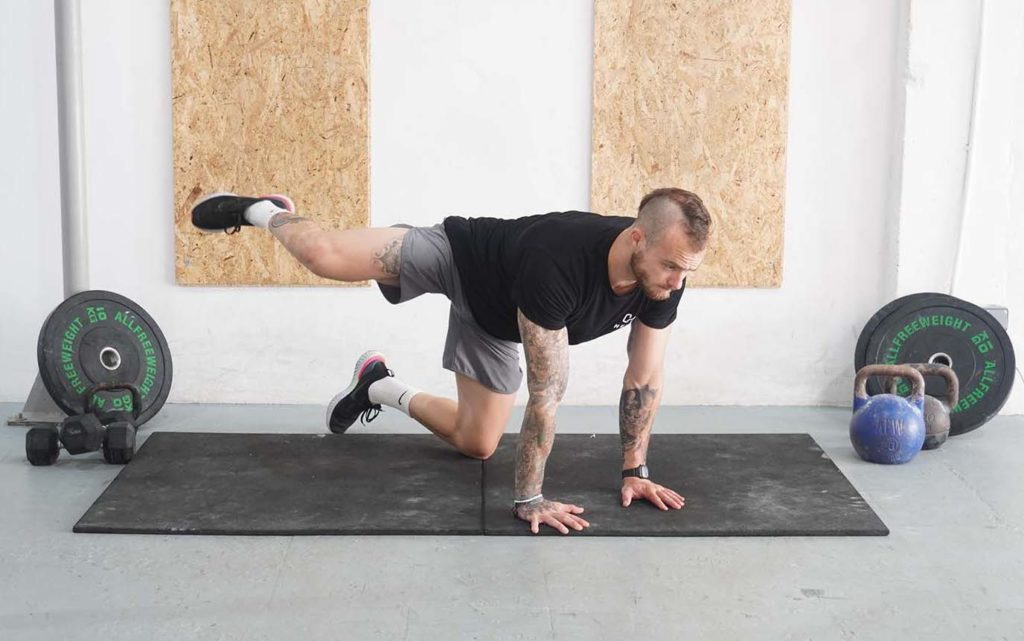

How to:
- Lay an exercise mat on the floor and get down on all fours. Have your knees bent at 90 degrees, your arms straight, and your palms flat on the ground.
- Retract your shoulder blades, engage your abs, inhale, and tilt slightly to your left side to raise your right knee off the floor.
- Lift your right leg laterally in one fluid motion, pausing briefly at the top position.
- Lower the leg to the starting position as you exhale, and repeat.
- Once finished, tilt slightly to your right, and perform the same number of reps for your left leg.
7. Dumbbell Bulgarian Split Squat
Bulgarian split squats are a classic lower-body exercise that primarily develops the quadriceps through knee extension. The movement also targets the gluteal region more than traditional squats (12).
According to some EMG data, using a longer stride by bringing your front foot further forward puts greater emphasis on the glutes (13). In addition to training the gluteus maximus, the medius and minimus provide hip stability.
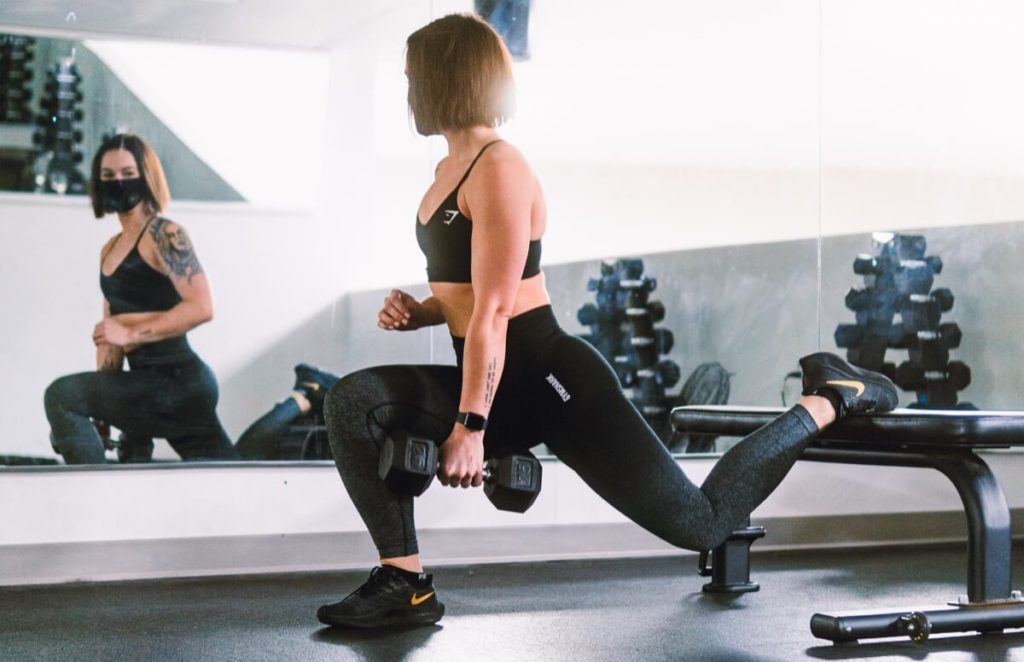

How to:
- Grab a pair of dumbbells, face away from a flat gym bench or another elevated object.
- Extend your left leg back and place your foot on the gym bench.
- Plant your front foot flat on the floor, retract your shoulder blades, and engage your abs. Keep your arms straight and to your sides.
- Inhale and descend into a squat by bending your front knee.
- Move down until your front thigh is almost parallel to the floor, pause for a moment, and press through your heel to straighten your knee, bringing yourself to the top position. Exhale.
- Inhale again and repeat.
- Once finished, switch leg positions, and do the same number of reps, performing each slowly and through a full range of motion.
Related article: Top 15 Gluteus Minimus Activation Exercises
8. Hip Abduction Machine
Performing hip abductions on a gym machine provides a similar stimulus to clamshells, fire hydrants, and similar exercises. The difference is that you don’t have to worry about stability and can adjust the resistance to fit your strength level.
Many trainees report better gluteal activation by performing hip abductions on a machine.
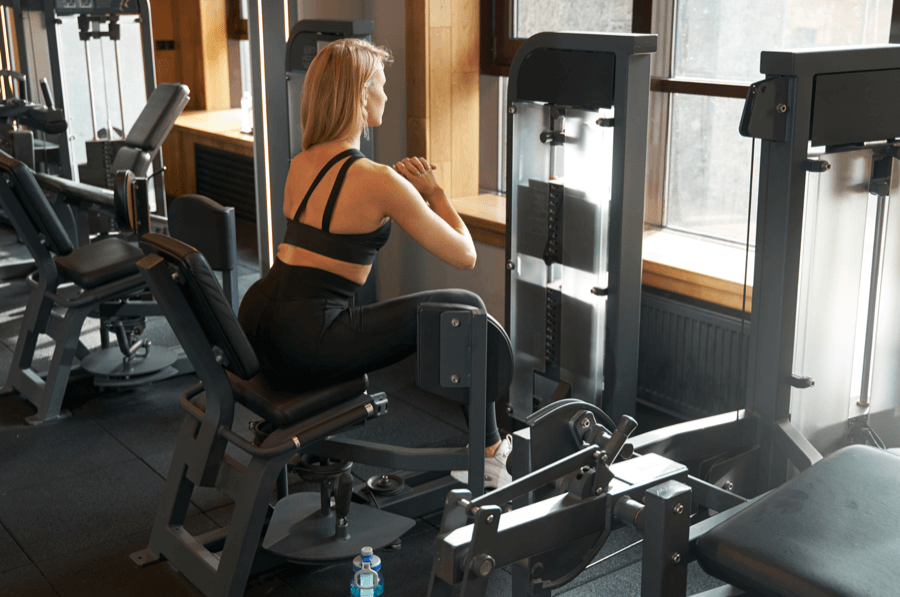

How to:
- Select the appropriate load and sit down. Your legs should be together with the outer portion of your knees against the pads.
- Sit back, retract your shoulder blades, and inhale.
- Spread your legs against the resistance in one fluid motion.
- Pause for a moment, and bring your legs together as you exhale.
- Inhale again and repeat.
9. Walking Lunge
Walking lunges are another excellent exercise to fix a square-shaped butt. The movement primarily trains the quadriceps through knee extension, but it also works the glute muscles (maximus, minimus, and medius) and hamstrings.
One advantage of walking lunges is they work one leg at a time, reducing muscle imbalance risk. In addition, you can overload your leg muscles with more weight and promote greater strength development.
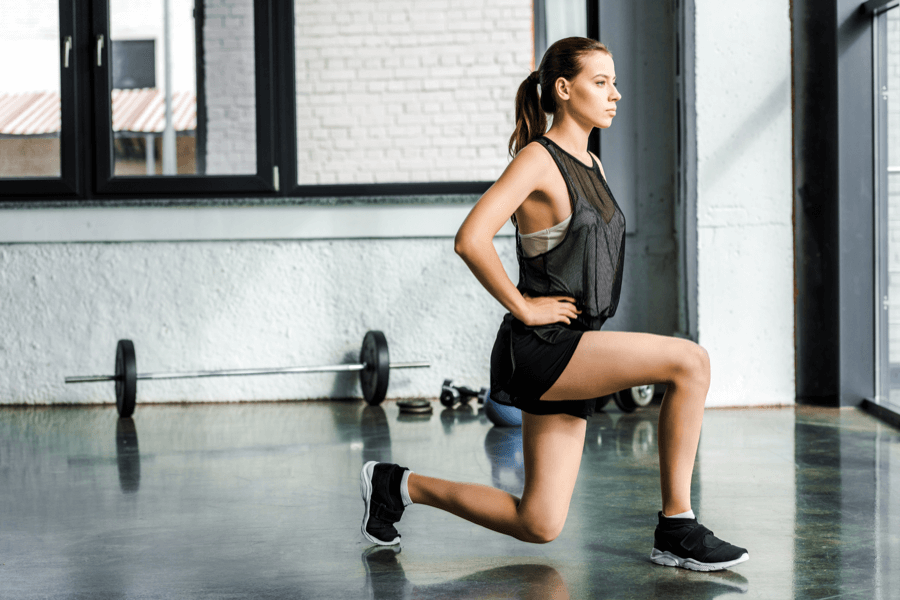

How to:
- Stand tall with your feet close, hands on your hips, shoulders back, and gaze directed a few feet forward.
- Inhale, tense your midsection, and lunge forward, planting your right foot on the ground.
- Immediately descend by bending your front knee until your thigh is roughly parallel to the floor.
- Press through the heel to extend your knee and exhale.
- Immediately bring your rear leg forward, planting your foot on the ground as you inhale.
- Descend into a lunge.
- Keep moving forward through lunges and maintain a steady breath.
10. Lateral Leg Raise
Lateral leg raises are an overlooked answer to the question, “How to get rid of a square butt?”
The exercise is fantastic for trainees of all levels because it offers several distinct benefits:
- It doesn’t require any equipment
- It trains the glute medius and minimus through hip abduction
- It promotes hip stability and pelvic alignment
You can do it as part of your warm-up routine or near the end of your lower body workouts.
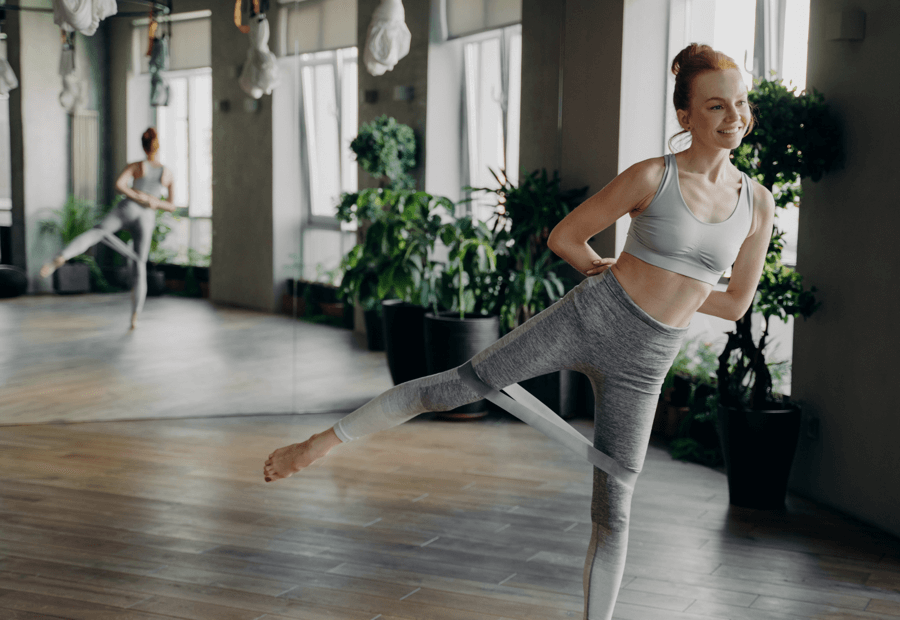

How to:
- Stand tall with your feet close, shoulders back, and hands on your hips.
- Engage your abs and inhale.
- Raise your right leg laterally in one fluid motion, pausing at the top.
- Slowly lower your leg to the starting position as you exhale.
- Inhale and repeat.
- Once finished, do the same number of reps for your other leg.
Frequently Asked Questions
1. What is a good square butt workout?
You can do plenty of square butt workouts for a rounder and more pronounced behind.
A good one includes several unique exercises that build muscle in the area. You should do at least one activity that emphasizes each of the three muscles: the gluteus minimus, medius, and maximus.
2. How to get rid of a square butt?
There are two primary things you should do to turn square glutes into a rounder bum:
- Lose excess weight by following our recommendations above
- Train the area enough to build muscle mass
3. Can I get a round butt without resistance training?
Procedures like a Brazilian butt lift might seem alluring, but developing a set of head-turning buns takes more than that. Answering the question “How to get a rounder butt?” comes down to more than a simple procedure that lasts a few hours.
Resistance training is necessary because it provides the stimulus your muscles need to grow, adding shape to your behind and making it appear more prominent.
4. How long will it take to fix my square booty?
Everyone is in a unique situation, so it is impossible to say how long it will take for you. However, the average person can see significant changes within three to six months of consistent training and good nutritional habits.
Final Thoughts
A round butt will always be in style because it looks good, displays a dedication to fitness, and contributes to athleticism and good posture.
The above are 10 of the best exercises you can do to turn your square behind into a head-turning bubble butt.
Combine the movements with our training suggestions, stay consistent, and you will see fantastic results in mere months.
Hevy Workout Tracker
Create your own workouts with Hevy, and track your progress. Join +2M athletes.




For Personal Trainers
Personal trainer software to build workout programs for your clients, and track their progress.




Don’t forget to check out the Hevy app if you’re looking for a simple tool to find effective exercises, log your workouts, and much more.


